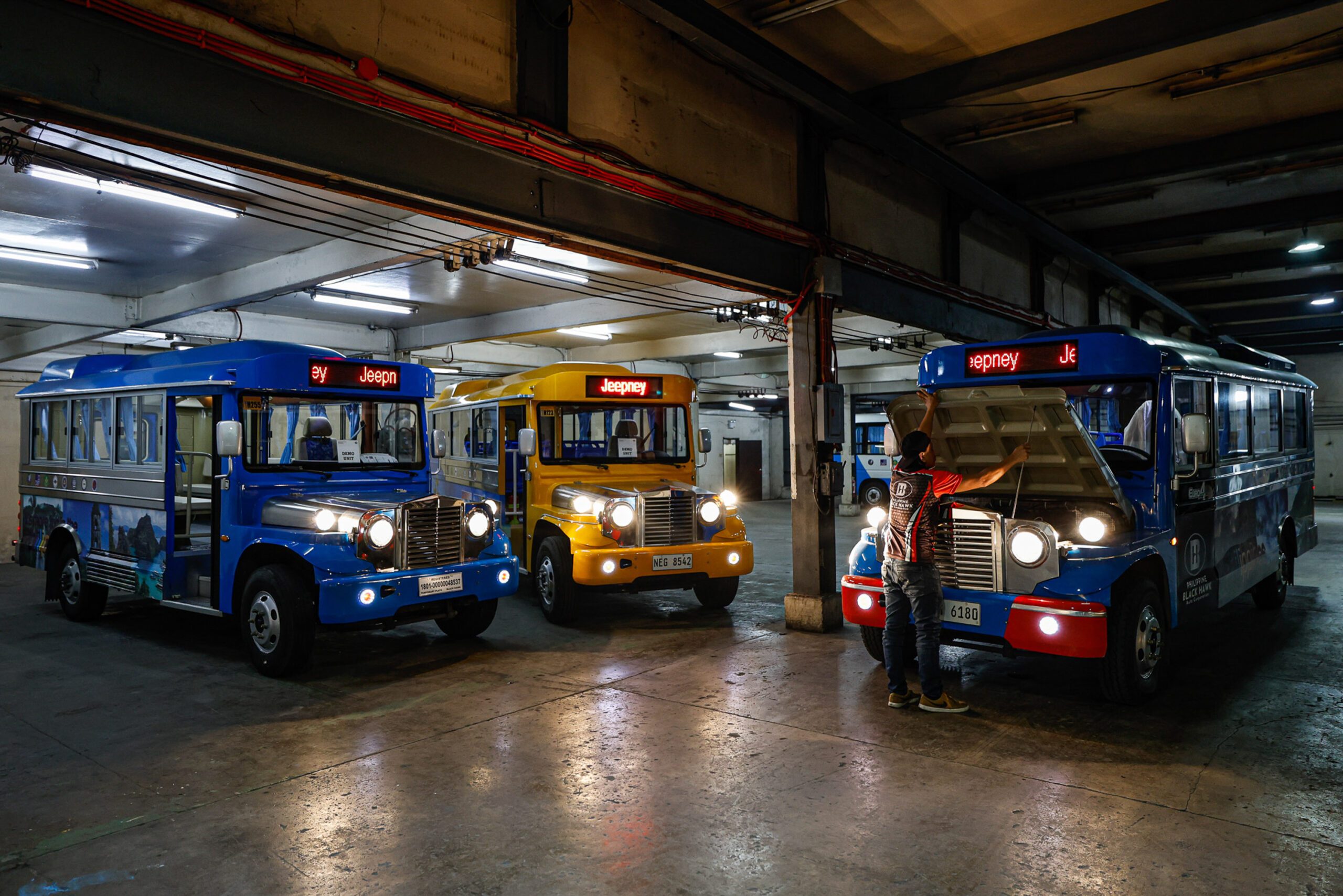SUMMARY
This is AI generated summarization, which may have errors. For context, always refer to the full article.

MANILA, Philippines – Commuters may just bear the pain of the government’s modernization program as minimum fares could soar from the current P15 to as high as P40.
Experts and manufacturers fear that the high cost of modern jeepneys could force a fare hike, especially since some jeepney operators are already struggling to pay for the monthly amortization of their new vehicles.
“‘Yung jeepney price po na P2.5 million, mag-iincrease ang fare natin, possibly from P27 to P40 per [passenger]. So ‘yung sinasabi ng DOTr [Department of Transportation], LTFRB [Land Transportation Franchising and Regulatory Board] na walang fare increase with modernization, hindi po ‘yata totoo ‘yon,” said retired University of the Philippines (UP) professor and UP scientist Teodoro Mendoza.
(With a jeepney price of P2.5 million, our fares will increase, possibly from P27 to P40 per [passenger]. So what the Department of Transportation and Land Transportation Franchising and Regulatory Board is saying that there will be no fare increase with modernization, I don’t believe that’s true.)
Under the government’s public utility vehicle (PUV) modernization program, traditional jeepneys must be upgraded to meet Philippine National Standards – which usually means that operators have to buy expensive modern jeepneys. These imported modern jeepneys usually cost about P2.48 million per unit.

In a UP Center for Integrative and Development Studies research, the researcher found that jeepney operators can usually get 250 passengers per day. That means an operator would need a minimum fare of P30 to offset their total costs, including the monthly amortization for their P2.5-million modern jeepney.
If passenger count were to drop to just 200 passengers per day, then minimum fares could reach P40.
What about if jeepney operators purchase locally manufactured jeepneys, such as the Francisco Motors e-jeepney that will sell for just P985,000 for the first 1,000 units? Mendoza estimates that fares could rise to about P24.
“High quality, safe, comfortable, and clean jeepneys have a corresponding price to pay. Making the riding public believe that there is no fare hike is like owning a cake and eating it too,” Mendoza said in a UP-hosted roundtable discussion on Monday, April 8.
LTFRB: Fare hikes follow a process
Meanwhile, the LTFRB’s Chief Transportation Development Officer Joel Bolano was quick to soothe fears of an impending jeepney fare hike.
“Gusto ko rin po ipaalala na ‘yung pagtaas po ng ating pamasahe lagi pong dumadaan sa discussion o mga hearings na ginagawa po ng LTFRB,” Bolano said, adding that the LTFRB also considers inputs from other government agencies, like estimates from the National Economic and Development Authority on how a fare hike could impact inflation.
(I’d also like to reiterate that increases in fares always pass through discussions and hearings conducted by the LTFRB.)
Bolano also mentioned that some cooperatives, which have already bought modern jeepney units, wanted to keep the current minimum fares, fearing that a raise in minimum fares would lead to fewer passengers and cut their revenues.
Asked by Rappler whether the requirement to upgrade to modern jeepneys would lead to higher fares, Boleno said that changes to minimum fares was usually related to fuel costs.
Officer-in-charge program manager of the PUV modernization program Sharmaine Enales also said that the requirement to modernize would also be supported by service-contracting fuel subsidy programs.
“These are all operational subsidies that, hopefully, will aid the operations of our transport service entities in their operations. Hopefully, this will cushion or subsidize the operations cost…affected by the volatility of our fuel market prices,” Enales said in a mix of English and Filipino.
Previously, the DOTr and LTFRB also shot back against a statement by IBON Foundation that minimum fares could reach up to P50 in five years due to the costs of modern jeepneys, calling such predictions “falsehoods” being spread by minority groups to “sow fear.” (READ: Gov’t denies job loss, higher fares even as only half of jeepneys in NCR consolidate)
Meanwhile, Leonard John Sarao – operations supervisor of the renowned jeepney manufacturer Sarao Motors – countered the LTFRB’s assumption, saying that the loan payments that operators bear for the modern jeepneys would now be a new factor in deciding minimum fares.
In the past, before operators were asked to upgrade to pricey modern jeepneys, Sarao said that the price of fuel was the main factor in determining the minimum fare.
“But now, with the increased cost of the modern unit, I think it directly correlates to the monthly amortization na binabayaran po, kaya din siya magtataas (that they pay, which is why it might go up),” Sarao said on Monday. “So again, this is something new, which needs to be pondered upon.” – Rappler.com
Affordable commutes is one way we can #MakeManilaLiveable. Join this push by journalists and communities to improve quality of life in Philippine cities, through community-driven storytelling and events that link ordinary citizens with policymakers and government officials. Learn more about the movement, and how to volunteer, here.
Add a comment
How does this make you feel?







There are no comments yet. Add your comment to start the conversation.